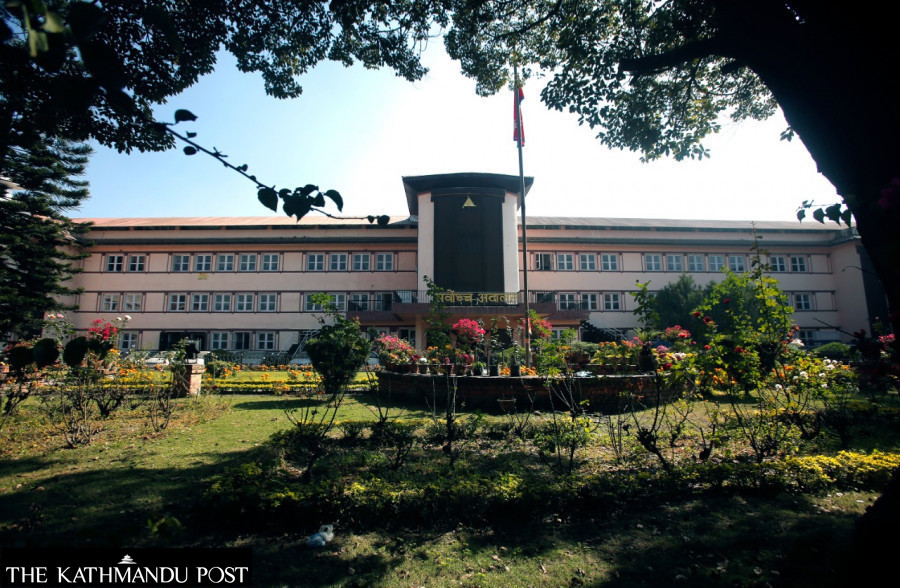National
Supreme Court says the executive cannot decide order of precedence arbitrarily
In a 7-year-old petition, the Constitutional Bench has asked the government to place chief justice right below the prime minister.
Post Report
The Supreme Court has said the executive cannot decide the order of precedence arbitrarily.
Passing a verdict in a seven-year-old writ petition by advocate Nani Babu Khatri and others, the Constitutional Bench has asked the government to place the chief justice right below the prime minister and justices at par with ministers in the order of precedence.
The Constitutional Bench led by then-chief justice Bishowambhar Prasad Shrestha has also asked the government to keep in view the principle of separation of powers between the executive, the judiciary and the legislative and their independence and dignity before setting the order.
The order of precedence sets the hierarchy of the personalities who steer various state organs.
“The executive holds the authority to set the order of precedence but it cannot be done arbitrarily,” reads the full text of the verdict from June 26 released on Sunday. “The decision must be transparent, local and impartial.”
The government on February 9, 2018 enacted an order of precedence, which, according to the petitioners, had disrespected the sitting and retired justices and judges. They had demanded scrapping the order of precedence by the court claiming that it attacked the judiciary’s dignity. While it had lowered the ranks of the justices and judges, former judges did not figure in the order.
Though the court refused to act as demanded by the petitioners, it has suggested the government ensure chief justice is ranked fourth and justices placed at par with a federal minister. In the current order of precedence, the chief justice comes right after the prime minister in the fourth position, and justices are listed below federal ministers. They are ranked equally as the ministers of state of the federal government.
The constitutional bench has also said the former chief justices’ ranking must be right below the ranking of former ministers and ranking of former justices right below the ranking of former ministers. At present, the former chief justice is ranked at par with the federal ministers but there is no ranking for the former justices.
Dissatisfied with the current order of precedence, the top court also has suggested placing high court chief judges right after provincial chief ministers and judges at par with provincial ministers. Currently, chief judges are ranked at par with provincial ministers and judges are at par with the chief attorney.
The order of precedence was dragged into controversy right after it came into force in 2019. It was revised a year and a half later; it has not been acceptable to some of the quarters. Judges Society, which brings sitting and former judges together, had in February prepared a suggestion paper to revise the order. It was adopted by a full court of the Supreme Court and sent to the government for implementation. However, successive governments have ignored it.
“The order of precedence should not be the cause to create differences and disputes between the public [those elected by the people] and administrative systems,” reads the full text. “Setting the order is a sensitive matter which needs to be handled seriously. It should not reflect any biases and prejudice.”




 23.12°C Kathmandu
23.12°C Kathmandu











